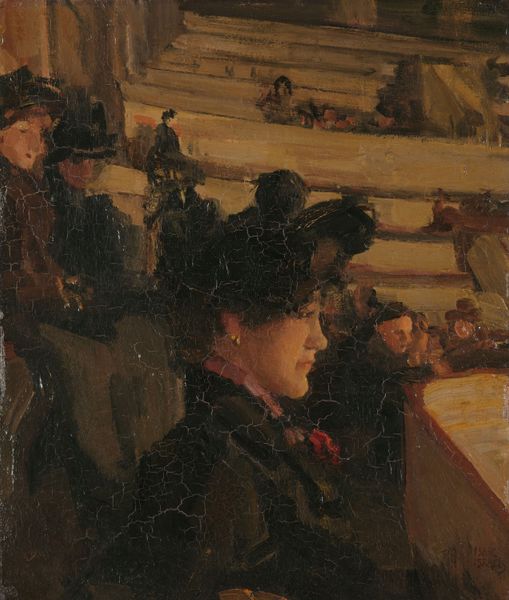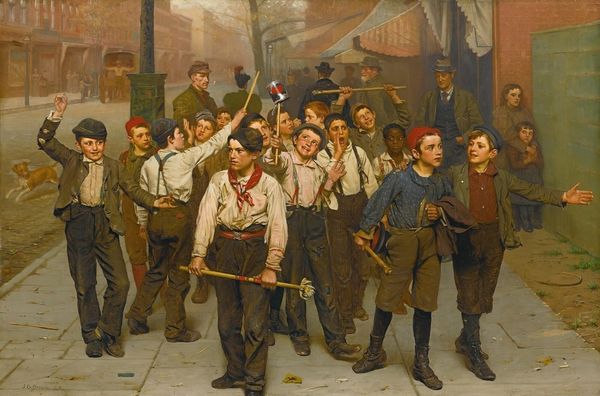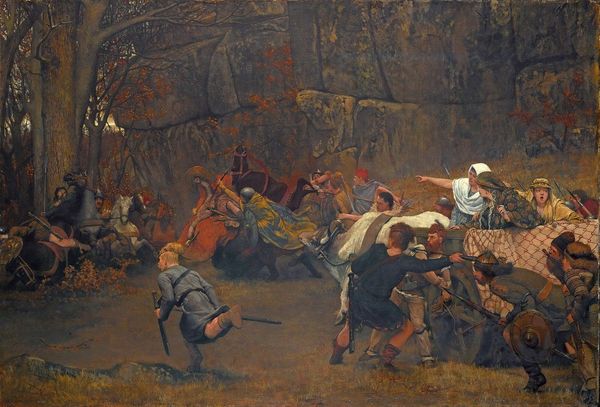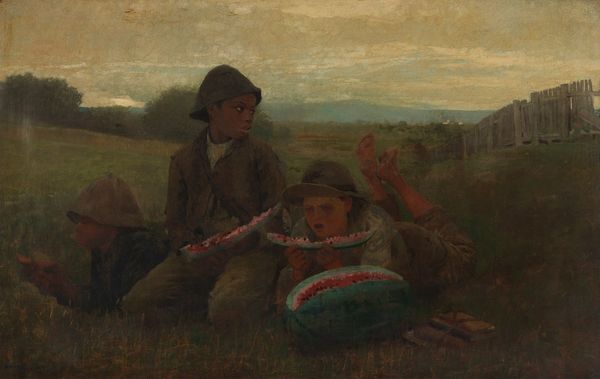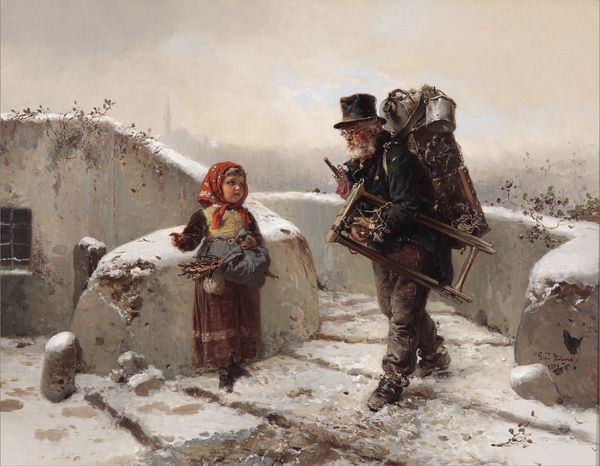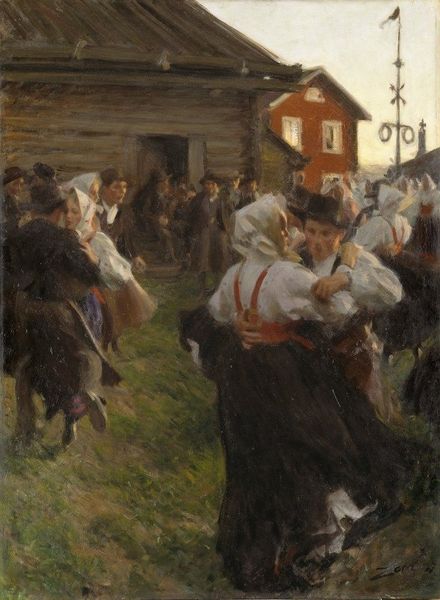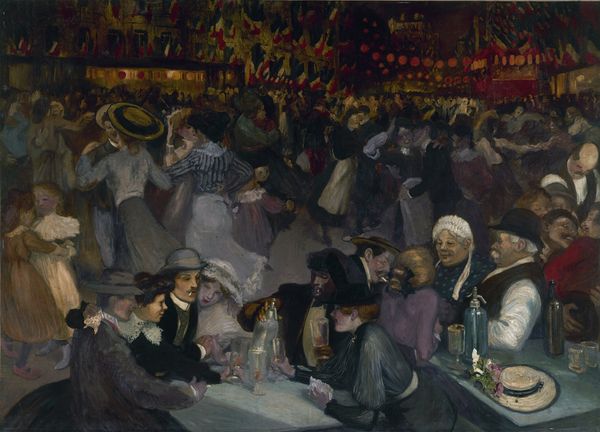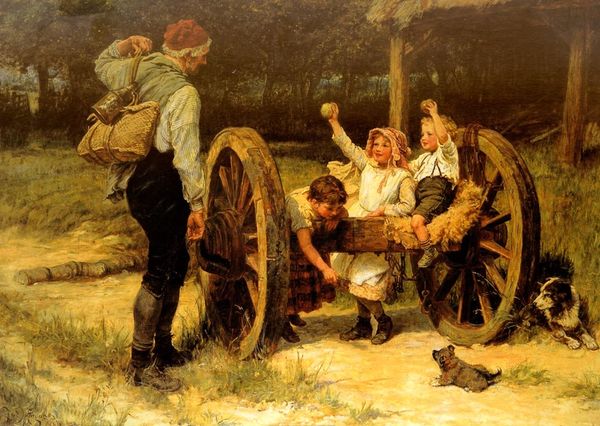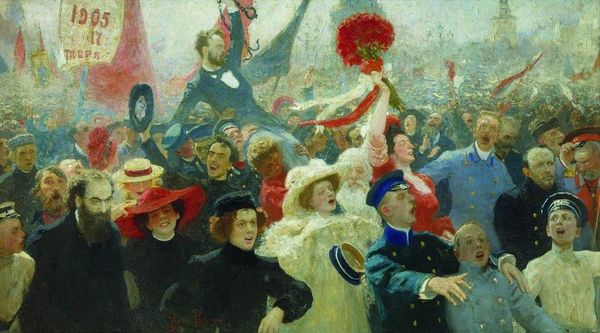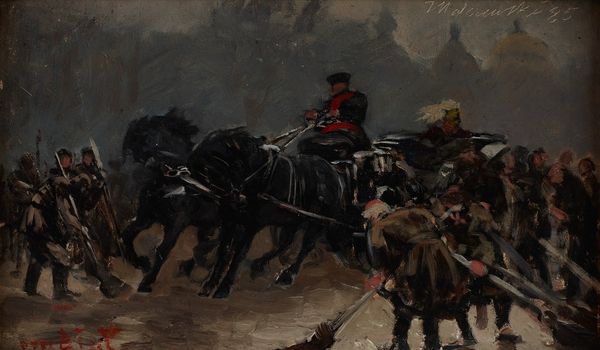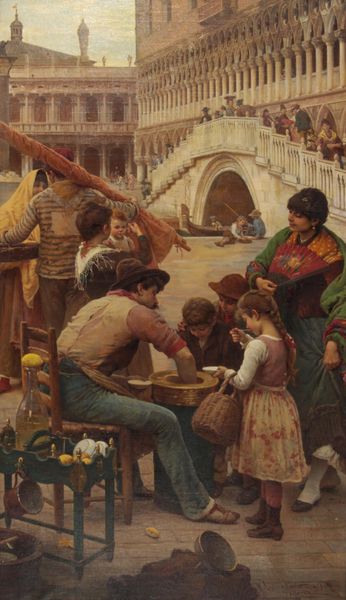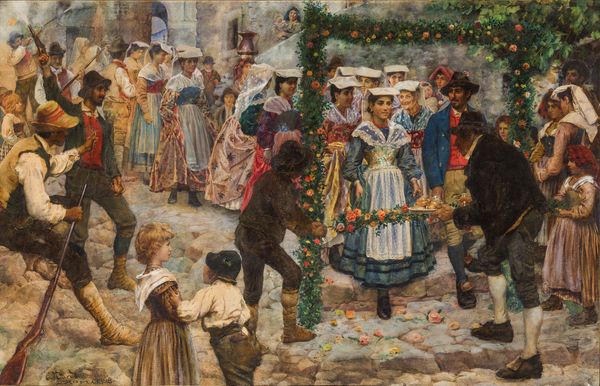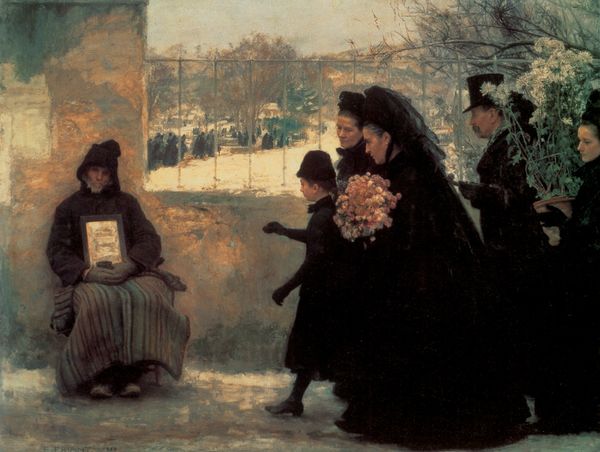
Dimensions: 90 cm (height) x 148.5 cm (width) (Netto), 132.4 cm (height) x 190 cm (width) x 7.8 cm (depth) (Brutto)
Curator: Standing before us, we have Erik Henningsen's "Changing of the Guard," completed in 1888. It resides here at the SMK, Statens Museum for Kunst. It's quite a large oil painting. Editor: Immediately, I feel a strange mix of melancholy and charm. The colors are muted, almost like looking through a vintage photograph. But those bright brass instruments—they just explode off the canvas. A lovely composition to consider. Curator: The painting encapsulates several layers of meaning: It acts as genre painting, portraiture, and something of a cityscape, with its representation of urban life. Henningsen frequently returned to scenes of daily life in Copenhagen. There is the artist’s romantic interpretation that comes from the Realism movement, which, by this period in art history, had been firmly established. Editor: Yes, and note how much the composition speaks. See how the rigid formation of soldiers almost disappears amidst the human throng to become something more amorphous? Is this truly about a changing of the guard or the ever-changing pulse of society as witnessed by an impassive but keen observer? Curator: You bring up an insightful interpretation, indeed. Consider how the symbolism within this group scene alludes to themes of nationhood, civic pride, and even the subtleties of social stratification within the Danish capital. Every face seems to hold a story. Observe how Henningsen manages to make each figure so intensely individualized! Editor: Absolutely. Look at the faces in the crowd, their expressions. There is weariness there, curiosity, resignation perhaps? The symbols are complex and sometimes opposing, too. Note the contrast between the uniformed formality and the ramshackle cart on the side—or the vegetable seller's basket and the trombone player in lockstep. It suggests commentary. Curator: I am especially captivated by how Henningsen weaves elements of Romanticism and Realism into his oeuvre—often incorporating subtle allegorical implications to make it an insightful sociopolitical image as well. I find Henningsen always gives a gentle social message. Editor: I see. It leaves you, well, contemplative. And the artist left so much room for just that. Henningsen captured an exquisite moment suspended between two realities. I appreciate the balance achieved by him within these frames. Curator: Precisely, indeed. "Changing of the Guard" holds layers to admire on closer viewing, in both form and social commentary. It allows us to experience history as we question our modern-day perspectives, too. Editor: Absolutely. What begins as a possible exercise in reportage matures into a lovely moment of collective pause for society to observe itself within and alongside its symbolic guards.
Comments
No comments
Be the first to comment and join the conversation on the ultimate creative platform.
